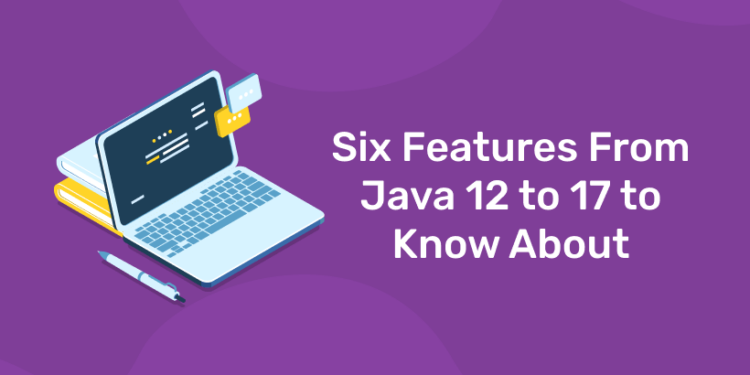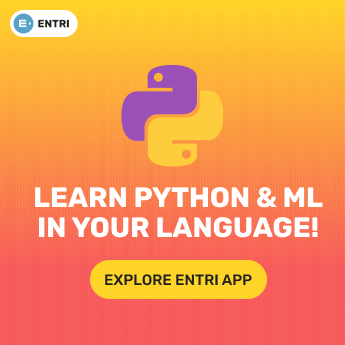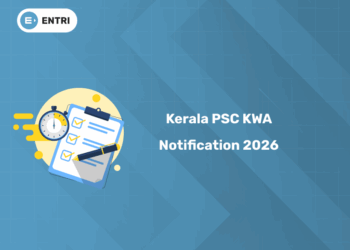Table of Contents
Java is a general-purpose, class-based, object-oriented programming language invented for having lesser performance dependencies. It is a computing venue for application development. Thus, Java is fast, secure, and reliable. It is widely operated for designing Java applications in laptops, data centers, game consoles, scientific supercomputers, cell phones, etc.
Java Platform is a cluster of programs that enable programmers to develop and run Java programming applications efficiently. It contains an execution engine, a compiler, and a set of libraries in it. It is a group of computer software and specifications. James Gosling invented the Java platform at Sun Microsystems, and the Oracle Corporation later accepted it.
This brief note on Java will help you to know more about the features of Java 12 to 17. Here, in this article, we have discussed some features of Java 12 to 17. Through the ENTRI Learning App, you can get more detailed notes on Java and programming. You can find the best choice of coding courses there, by skilled trainers.
Java Editions
SUN Microsystem (now Oracle corp.) split Java concepts into four categories for easy supervision and easy distribution to all kinds of domains like mobile, desktop, and internet applications. In Java, a type is called Edition. So, Java ideas are divided into four editions.
Java SE (Java Platform Standard Edition)
Java EE (Java Platform Enterprise Edition)
Java ME (Java Platform Micro Edition)
Java FX (Java platform Effects)
For collecting and executing Java applications every edition has its execution platforms. Java SE platform is JRE and the Java EE platform is server software (Tomcat, Weblogic e.t.c). Java ME platform is MDK.
For designing, collecting, and managing stand-alone applications we must install JDK with JRE software. For designing, organizing, and managing Java EE web and enterprise applications, we must install server software with JDK. JDK for collecting and server software for managing. For designing, organizing, and managing Java ME applications.
Want to Join the Coding Courses? Click and Proceed Now!
Java 12 and features
1: What is the default value of a boolean in Java?
Oracle will roll out Java editions and new releases will drop once every six months thereafter. The objective is to make new releases more systematic for the Java ecosystem, with specific releases committed as long-term support (LTS). And by support, we mean the distribution of update releases for bug fixes and critical security patches. This version offered a list of new features such as Switch Expressions, Default CDS Archives, Shenandoah, Microbenchmark Suite, among others.
Some of the great benefits you can get from the Java 12 features are:
- it will make the coding procedure more manageable by extending the switch statement and allowing it to be used as a statement or expression
- enable the JDK to build procedure by making a class data-sharing archive through a default class list on the 64-bit platform
- lessen the garbage collection pause times by processing evacuation work while running the Java threads, which indicates that pause times are constant still of the heap size
- add a suite of microbenchmarks into the JDK build source code–streamlining the running of existing benchmarks and the design of new ones
- destroy any duplicate work essential with maintaining two port
- make aborting the garbage collection process much more efficient by busting up the mixed collection group into mandatory and optional parts
- boost the G1 garbage collector to presently return unused Java heap memory to the operating system when idle
Explore Free Coding Courses !
Take your first step toward mastering in-demand skills, acing interviews, and securing top-tier jobs with Entri's free coding courses.
👉 Explore Free Courses NowJava 12 to 17 features
In September 2021, Oracle rolled out Java 17, the next long-term aid release of Java. If you’ve been mainly working in Java 8 or Java 11, you might not be conscious of some of the cool additions from Java 12 onward.
Seeing as this is an effective release, it would be nice to highlight some of the edition’s new features. Note, most modifications in Java are first “previewed,” which indicates they are added to a release, but they aren’t considered finished yet. People are inspired to experiment with them but prevented from using them in production code.
All the features singled out here have been officially added to Java, and are past their preview stages.
Learn to code from industry experts! Enroll here!
1: Sealed Classes
Sealed Classes, previewed in Java 15 and officially added in Java 17, are new standards of implementing rules on inheritance. When you add the sealed keyword to the meaning of a class or interface, you also add a list of classes that are allowed to extend or enforce it.
Sealed classes not only save your code from outside sources, but they communicate bound to people you might never meet. If a class is sealed, you are saying these are the classes suggested to extend it, and no others. It’s an impressive sort of robustness that assures that years down the line, anyone reading your code will comprehend the strictness of what you wrote.
2: Helpful Null Pointers
Helpful Null Pointers are an impressive update – not overly complex, but still a welcome change to the language. Officially produced in Java 14, Helpful Null Pointers enhance the readability of null pointer exceptions (NPEs), printing out the name of the call that threw the oddity, as well as the name of the null variable.
3. Switch Expressions [Java 14]
This language feature adds the capacity to switch depending on the type, analogous to the syntax provided by pattern matching for instanceof.
Previously, if you wanted to accomplish different things depending on an object’s dynamic type, you had to construct an if-else if chain using instanceof
4: Text Blocks
It was first previewed in Java 13 and added officially in Java 15, Text Blocks are signifying to simplify writing multi-line strings, are able to decode new lines, and maintain indentation without the need for escape characters.
Text Blocks create it infinitely more comfortable with pasting snippets of code into strings. Since indentation is maintained, if you were to write a block of HTML or Python, or any language really, you’d be able to write it naturally and just wrap it in “””. That’s all you require to preserve the formatting.
5: Record Classes
Records, previewed in Java 14 and officially added in Java 16, are data-only classes that take all the boilerplate code associated with POJO’s.
There’s plenty to talk about following Records. They’re a big difference, and they can be extremely useful in the right situations. Here, we haven’t covered everything, but hopefully, this presents you with the gist of what they’re capable of doing.
6: Pattern Matching
Another development in Oracle’s war on wordage is Pattern Matching. Previewed in Java 14 and Java 15, and officially unleashed in Java 16, Pattern Matching is a tool to get rid of needless casting after an instance of the condition is met.
Moving to Java 17 sooner rather than later is usually the finest option as in the future decreases migration expenses. You will also be aid from all the advancements created in recent years, including increased support for driving in containers and new low-latency garbage collector performances.
Enroll in our certificate program in Full Stack Web Development!
Even if you have no preferences to migrate from previous versions to this one, it’s always a fine idea to stay up with the new features being invented into the language.
Of course, these aren’t the only modifications from Java 12 to Java 17, but they’re the ones that are highlighted. If the list of your top features varies from this, please examine these too. And for further details and notes, you can visit our ENTRI Learning App.














